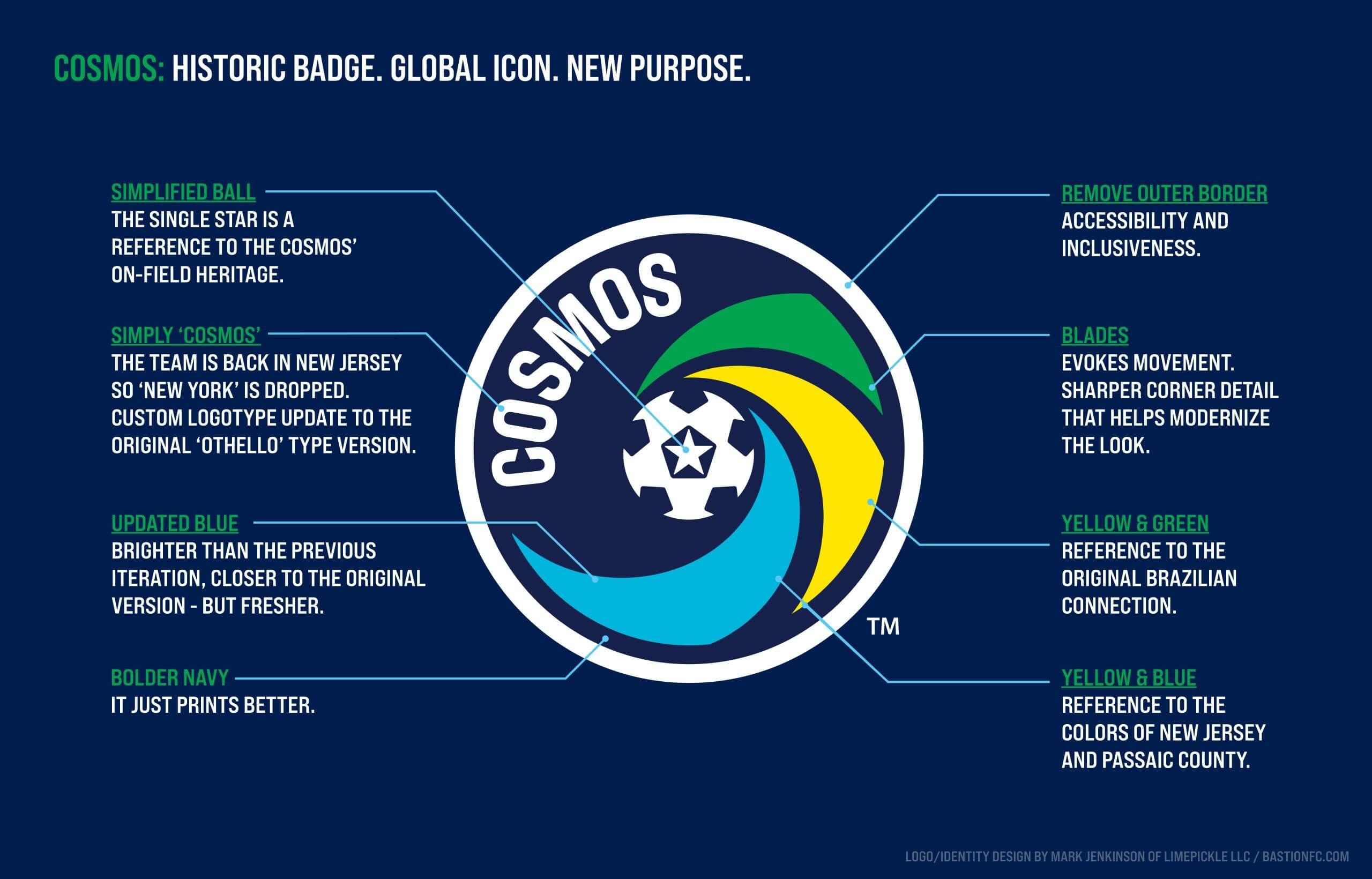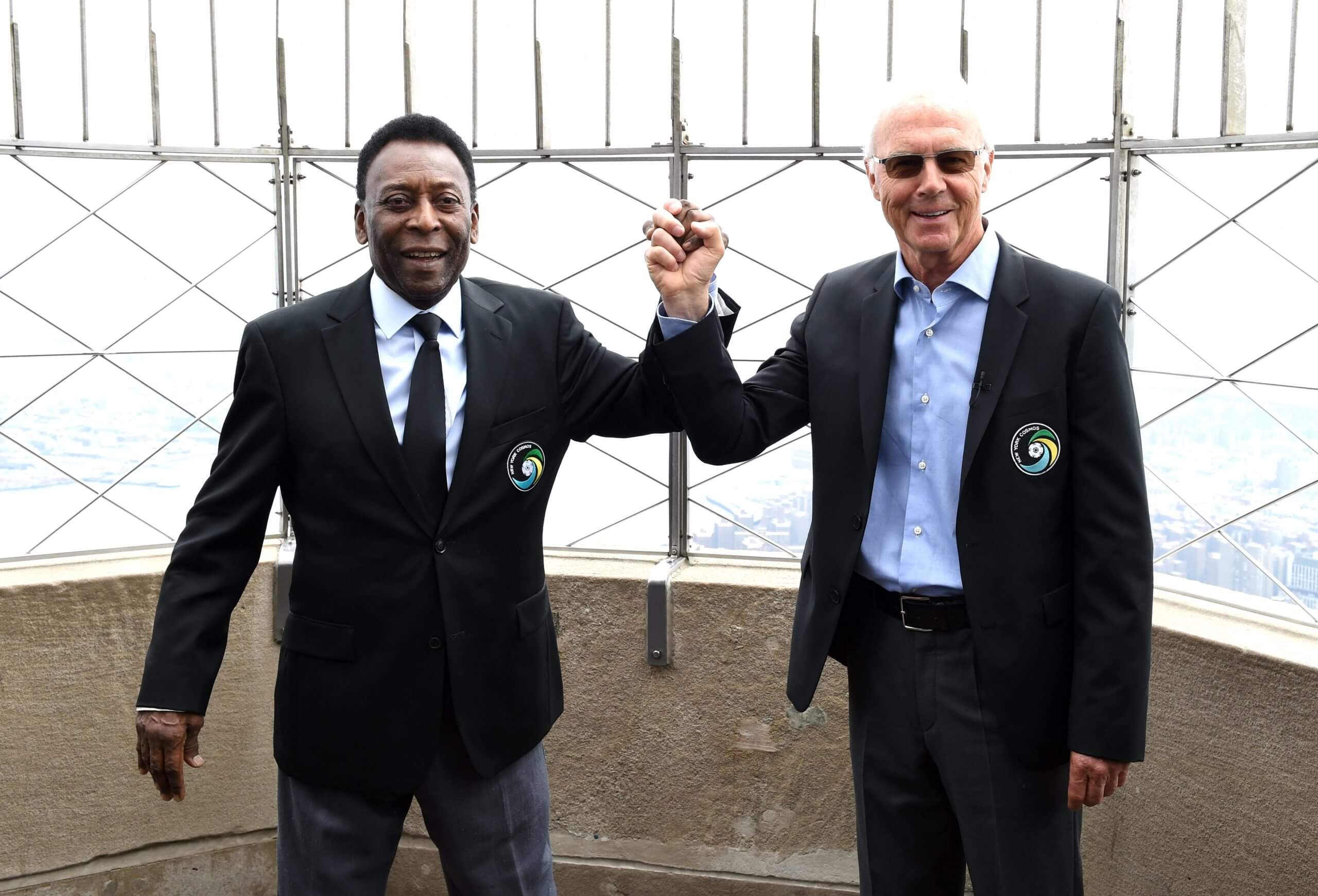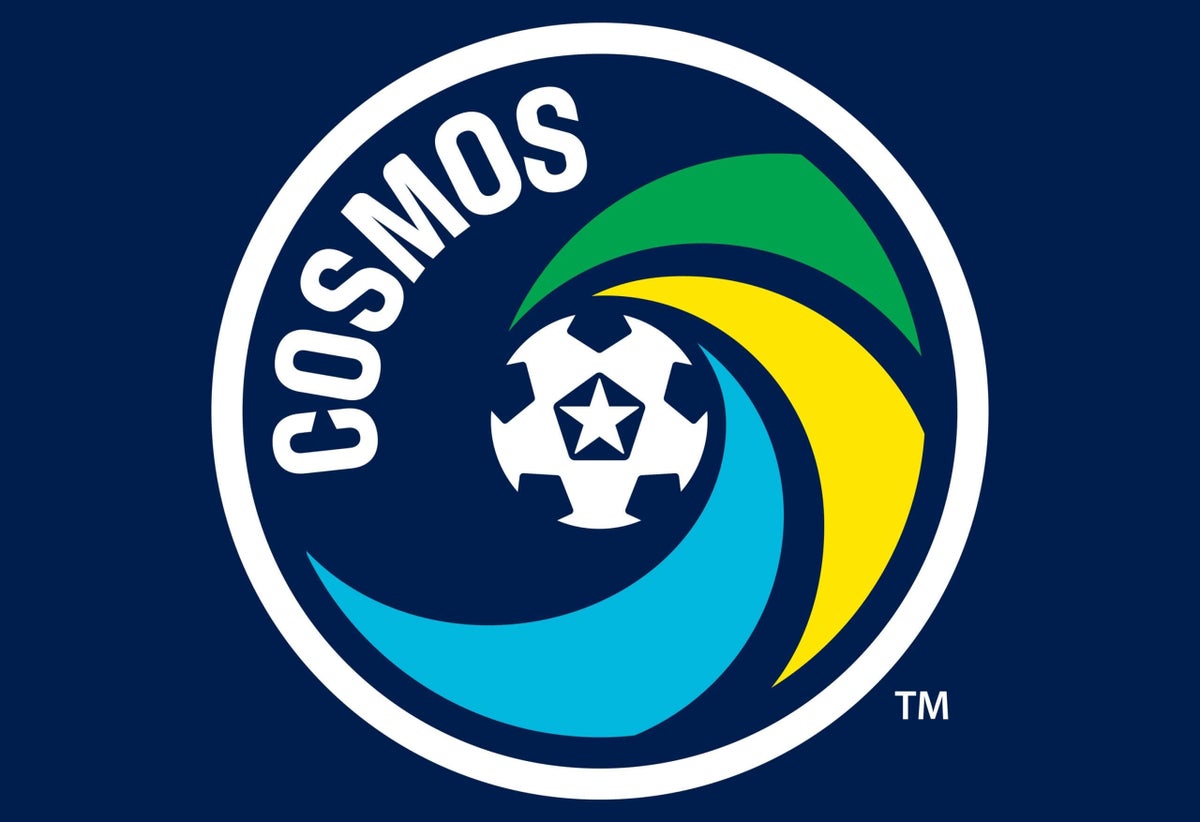For most of the past decade, the New York Cosmos have almost solely existed in the American soccer landscape’s past tense. The impact of Pelé and Franz Beckenbauer playing in the nation’s largest market still resonates half a century later, with Inter Miami’s signing of Lionel Messi arguably being the modern-day remake of a 1970s classic. Proponents of the nation’s lower-division terrain also speak of the Cosmos — arguably the most successful second-division team of the modern era, dominating the NASL from 2013 to 2017 — with a sort of begrudging respect, a lucrative Goliath that forcibly cast every opponent as that match’s David.
What’s been lacking since the NASL’s own revival ended in 2017 is a fresh batch of memories to keep the Cosmos from being more of a brand than a soccer team. The Cosmos have played just four competitive games in that span, all during the lockdown autumn of 2020. While the team name and logo have undeniable cachet, their value was greater among nostalgic collectors than neutrals searching for an active point of entrance into following the sport.
On Thursday, however, the ownership group bringing a USL club to New Jersey is reviving the Cosmos’ on-field legacy. Officially, this marks the return of the New York Cosmos, which will debut in third-division USL League One in 2026. The group bought the intellectual property as well as primary ownership of the club from Rocco Commisso, with the Fiorentina owner (who acquired the Cosmos in 2017, two years before purchasing the Serie A side) holding “a small ownership stake.”
There’s significant continuity to the 2010s iteration beyond the name. Among the co-owners is Erik Stover, who joined the club in NASL in 2012. In his previous role with the New York Red Bulls, he played a crucial role in both signing Thierry Henry and the building of Red Bull Arena (now Sports Illustrated Stadium), winning MLS executive of the year in 2010. With the Cosmos, Stover kept the club at or near the top of the NASL for each of its five seasons, working with Giovanni Savarese on the sporting side to bring in aging icons (like Raúl and Marcos Senna) as well as a strong domestic core.
But first, to link two previous points: these New York Cosmos will play their games in New Jersey. As such, the team will revisit one of its crest variations that was donned by Pelé and Beckenbauer at the height of the club’s buzziest heyday.

(Photo courtesy of the Cosmos)
“The Cosmos have told a very winding story over the decades,” Stover told The Athletic on Wednesday, “including in that, at its very peak in 1977, when the Cosmos came to Giants Stadium, they took New York out of the crest and it became just ‘Cosmos.’ So that’s the logo that most people recognize with the heyday of the Cosmos: 1977, ’78, Pelé and Beckenbauer, packed stadiums. That’s really part of our history; we’re sort of reliving it again.
“It’s funny: I was talking to (former Cosmo and U.S. international) Werner Roth last night. For the first time ever, the Cosmos will have their own stadium that they call home — both men’s and women’s. For the first time, we’re not nomadic. We’re not wondering where we’re playing next year.”
The Cosmos will play at Hinchliffe Stadium, a 7,800-seat arena located in Paterson, N.J. The venue itself is in the midst of a revival. Hinchliffe Stadium originally opened in 1932 and hosted the Negro Leagues’ New York Black Yankees and the American Soccer League’s New Jersey Eagles in the late 1980s before shuttering in 1996 after many neglectful years without maintenance and upkeep. In 2023, it reopened to become the home of the New Jersey Jackals, an independent league baseball team.
As for the aesthetics, while the above crest explainer retcons aspects of the club’s identity, especially in rationalizing its original color palette, it’s a mark that will instantly have a place in the wardrobes and on the walls of diehard fans of soccer around the world. Despite the stops, starts and various iterations, the Cosmos remain a singularly recognizable brand in American soccer. Their one-time heights have now become part of the sport’s oral tradition, when the game’s original “GOAT” came stateside to face other luminaries including Johan Cruyff, George Best, Gerd Müller and Gordon Banks.
Stover won’t be working on the club’s rebuild alone; in vintage Cosmos fashion, he’s recruited a storied ex-international to play a central role.
Earlier this week, the group announced that it added retired striker Giuseppe Rossi as the club’s vice chairman and head of soccer. A former Italy international, Rossi was born in Teaneck, less than 14 miles from Hinchliffe Stadium. Rossi will be directly involved in daily decision-making, with his playing career helping inform what he still views as one of the biggest areas where soccer in the U.S. trails many other nations: the critical steps in player development during their teenage years.
“Today, I feel like it’s parents more than anything telling these kids that they have to decide something at 13, 14, 15 years old,” Rossi told Goal this week. “It’s ridiculous, absurd. They do that so they can have a status. Who gives a crap? Who cares where they’re playing national team soccer at 13, 14, 15 years old? It doesn’t mean anything. It’s just a status for parents so they can talk about their kids and say this and that. It’s not developing players. It’s putting extra pressure and it’s taking away from what the true focus should be: developing and having the right coaches to develop.”

Giuseppe Rossi has a hand in the relaunch of the Cosmos as a USL franchise (Photo by Diego Puletto/Getty Images)
Albeit speaking with less outright antagonism, it’s a general sentiment that’s in line with Stover’s view. His time with both the NASL’s Cosmos and the Red Bulls has given him ample experience in how players can advance in their careers at the MLS level as well as in the lower leagues.
“I think anybody that works in soccer in the United States will tell you that we’re not very good at developing players from their mid-teens to their early 20s,” Stover said. “And it’s been a problem. It’s largely because we don’t have enough professional environments for kids to continue their career.
“Even if you can get a scholarship to a pay-to-play system, or even if you’re playing with the Red Bulls, you might not be able to get there, You don’t have a car, there’s not mass transit. The practical challenges of just training are very real.”
While many USL clubs have gradually incorporated academy structures into their structure, the overwhelming majority of high-end player development is entrusted to the most established MLS setups. In 2025, MLS launched its 30th active club in San Diego — a large number of teams for a first-division league, but one that can only provide a fraction of the requisite opportunities needed to keep up with the number of youth soccer players in the country. Most non-MLS programs charge fees to participate (the “pay-to-play system” referenced by Stover), a significant barrier to entry for many.
There’s significant geographic scarcity, too. Seattle Sounders midfielder Obed Vargas, a breakout talent in recent years, had to relocate from Alaska as a teenager to chase his professional dreams. U.S. international and Crystal Palace defender Chris Richards left Birmingham, Ala., to join FC Dallas’ academy before the USL set up a club in the area. Even the more populated hotbeds like Los Angeles, Chicago and New York/New Jersey are left with very few opportunities for burgeoning pipelines of rising talent.
“The example I like to give is that in New Jersey, there are nine and a half million people,” Stover said. “There’s one professional club in the entire state. Red Bull does it very well, but they’re the only one. In Portugal, there are 10 million people, and there are lots of clubs across so many levels and layers of the hierarchy. The net that they’re casting is much, much wider than ours.”
It’s a strong commitment to development that could help this iteration of the Cosmos be less reliant on the stars it recruits and better equipped to endure on its own merit. While the Cosmos will still nominally identify with “New York,” just like the Red Bulls, it’s another avenue available for promising young New Jerseyans who may follow in Rossi’s footsteps.
The Cosmos will also arrive in the USL — which was a direct rival to the NASL in the 2010s — at a time when the league system itself is undergoing an ambitious reinvention. In March, the USL’s boards of governors (comprising all owners in the Championship and League One) voted to adopt a promotion and relegation model. Owners see it as a way to go beyond the current local, community-driven iteration and gain a greater national and international following.
The narrative potential will only get richer as neutrals can monitor the Cosmos’ hopes to rise the ranks to join a newly proposed and first-division sanctioned league to operate above the Championship.

Late New York Cosmos greats Pelé and Franz Beckenbauer promoted the club at the Empire State Building ahead of its NASL season opener in 2015. (Photo by Timothy A. Clary/AFP/Getty Images)
Throughout the 2010s, and especially under Commisso, the Cosmos’ became synonymous with the NASL’s opposition to the MLS model, a single-entity structure which is a closed system with no other pathway into the league but nine-figure expansion fees. The years following the NASL’s final season in 2017 saw the NASL and U.S. Soccer clash in painfully slow-moving litigation. In February, the antitrust lawsuit was dismissed by a jury. Still, Stover feels the legal push did help the USL set up its more ambitious trajectory.
“My personal opinion is that the USL Super League would not be first division if it wasn’t for all the lawsuits against U.S. Soccer, and how U.S. Soccer was operating back then,” Stover said. (The USL Super League is a first-division sanctioned women’s league that debuted last summer and provided the women’s landscape with a second professional league at the highest level, joining the NWSL.)
“I think it’s also paved the way for promotion and relegation,” he continued. “When you’re operating a club, it is so wonderful to have hope as part of your club’s identity, and we haven’t really had that in the past. Now, what it’s going to look like and how it unfolds, I don’t know. But we know it’s coming, and so a whole bunch of things have come together to make this a really unique moment in time for us.”
There’s still a lot of work left to do, both for the Cosmos’ impending relaunch as well as the USL’s aims to kick off pro-rel. The former pursuit will happen far quicker, with USL League One historically kicking its seasons off in March.
So while the name and identity are familiar and the history is indelible, the months to come are all about refining the modern iteration’s DNA with a clearer focus on being as valuable for Northern New Jersey as it is for merchandise collectors.
“We’ve been hyper focused on really defining who we are,” Stover said. “The Cosmos’ legacy is clear. The cosmopolitan nature of the club has been clear. But for us, it’s how do we apply it in a way that really works here in North Jersey, and then taking those concepts and putting them into practical use. Those ideas have informed every decision we’ve made with staffing. So many of the people we’ve hired, if not all, are from New Jersey. Several are from Paterson, grew up in the neighborhoods here, and our entire goal needs to be about building a community around the club.
“It’s really great to look around the room and see a very diverse set of people in so many different ways, but that everybody’s unified on building this club back up in a way that is community-driven.”
(Top photo: Courtesy of the Cosmos)
